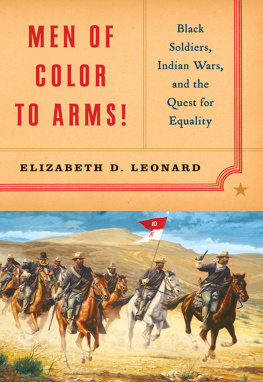
This edition is published by PICKLE PARTNERS PUBLISHINGwww.picklepartnerspublishing.com
To join our mailing list for new titles or for issues with our books picklepublishing@gmail.com
Or on Facebook
Text originally published in 2004 under the same title.
Pickle Partners Publishing 2014, all rights reserved. No part of this publication may be reproduced, stored in a retrieval system or transmitted by any means, electrical, mechanical or otherwise without the written permission of the copyright holder.
Publishers Note
Although in most cases we have retained the Authors original spelling and grammar to authentically reproduce the work of the Author and the original intent of such material, some additional notes and clarifications have been added for the modern readers benefit.
We have also made every effort to include all maps and illustrations of the original edition the limitations of formatting do not allow of including larger maps, we will upload as many of these maps as possible.
FIRST KANSAS COLORED VOLUNTEERS: CONTRIBUTIONS OF BLACK UNION SOLDIERS IN THE TRANS-MISSISSIPPI WEST
by
MAJ Michael E. Carter.
TABLE OF CONTENTS
Contents
TABLE OF CONTENTS
REQUEST FROM THE PUBLISHER
ABSTRACT
Over one hundred and eighty thousand black men fought for the Union during Americas Civil War. From infantrymen, to artillerist and cavalry soldiers, these soldiers combined to form one hundred and sixty-six Union regiments. On 29 October 1862 at Island Mound, Missouri, the First Kansas Colored Volunteers, an infantry regiment comprised mainly of blacks from Kansas and Missouri, became the first black regiment to experience combat during the Civil War. Their courage and outstanding performance in battle, as recorded, are unquestioned. What have been omitted from research thus far are their contributions to overall Union successes in the Trans-Mississippi West. Their accomplishments are remarkable, for they came in the face of extreme obstacles of prejudice and hatred. No Quarter was ever given and No Quarter was asked of the regiments black soldiers. The contributions of the First Kansas Colored Volunteers, in conjunction with those of the many regiments they served alongside of, resulted in a resounding Union victory in the Trans-Mississippi West.
ACKNOWLEDGMENTS
I would like to give special thanks to my wife Bianca and my family for their understanding and patience as I worked on this project. Their encouragement sustained me throughout the completion of this project.
I would also like to thank Ms Phyllis Bass, director of the Richard Culture Center in Leavenworth, Kansas, for providing an in-depth view of the accomplishments of Captain William D. Matthews and life in Leavenworth during the 1860s.
I extend a special thanks to Major David Christensen, Dr. Donald Wright and Mr. Kelvin Crowe for their extensive time spent reviewing my work and coaching me throughout my research.
Finally, I would like to extend my special thanks to the men of the First Kansas Colored Volunteer Infantry Regiment. Their dedication to the principles of freedom, and their courageous struggle to participate in its attainment are the precursors to the many black men and women serving in the Armed Forces today. Their contributions would not be possible but for your accomplishments.
CHAPTER 1 INTRODUCTION
From the moment shells began falling on Fort Sumter in April of 1862, to the surrender of Confederate General Stand Waite in June 1865, black Americans played a pivotal role in the outcome of the Civil War. All told, some 180,000 black Americans served as Union soldiers from as far north as Maine to Florida and over to the western plains of Kansas. These soldiers gallantly fought for their country and for the principles of freedom and justice. We know much of their history. We are familiar with the courageous men of the Fifty-Fourth Massachusetts Volunteer Regiment. Their assault of Battery Wagner, well chronicled in the movie Glory, introduced us to their bravery, dedication, and commitment to the principles of honor and freedom. Yet, their story has not been told in full. That story includes some one hundred sixty-six black regiments who fought to unite a nation. One such regiment came into existence in the western state of Kansas, far from the battles of Bull Run, Vicksburg and Gettysburg. This regiment of black soldiers participated in some of the fiercest fighting of the war, fighting loyal Confederate forces as well as groups of pro-slavery renegade bandits. They fought and defeated an intense and deeply divisive force of prejudice, a force of such magnitude it literally split the nation and threatened its very existence. Their accomplishments helped ensure Union control and ultimate victory in the Trans-Mississippi West. This is the history of a once relatively obscure group of soldiers known as the First Kansas Colored Volunteer Infantry Regiment.
Though overshadowed by operations in the east, the Trans-Mississippi West greatly influenced the outcome of the Civil War. From the majestic mountains of the Rocky Mountain and Sierra Nevada ranges, the Union received the lead and cooper used in making weapons and ammunition, and gold to help finance the war. Louisiana provided the Confederacy cotton for sale to international markets through Mexico. Texas not only fueled a large portion of the cotton industry, but also supplied Southern forces in the east with cattle. Throughout the entire region, from the Gulf States to North Dakota, Union soldiers battled their Confederate counterparts for resources to sustain their armies. In addition to resources, the Trans-Mississippi West supplied both armies with soldiers who fought in both eastern and western theaters.
Of particular importance to both sides was the state of Missouri. A border state, Missouri contained substantial numbers of Unionist and Pro-Southerners during the summer of 1861. In June of that year, Governor Jackson politically divided Missouri by issuing a proclamation calling for fifty thousand of the states militia to enter active service to protect pro-Southern Missourians from a Union invasion. As Wiley Britton explains in Civil War on the Border, This proclamation of Governor Jackson threw down the gauntlet of open rebellion, and the Government was obliged to meet the issue or confess its weakness by abdicating its rightful authority. {1} Governor Jacksons action began the movement toward civil war within Missouri. Confederate and Union forces soon found themselves embroiled in battle within the state at Wilsons Creek and Pea Ridge.
For the Confederacy, Missouri was placed under the command of the Trans-Mississippi Department, established on 26 May 1862 by General Order No. 39. {2} In July 1862, President Lincoln placed General John Charles Fremont in command of the Department of the West, which included Missouri. The mission given to General Fremont was to secure Missouri for the Union. Along with the mission, President Lincoln gave General Fremont carte blanche authority to do what was necessary to ensure Missouris security. {3} On 24 October 1864, President Lincoln advised Major General David Hunter to occupy and secure the towns of Sedalia and Rolla. President Lincoln wrote From these two points, Sedalia and Rolla, and especially in judicious co-operation with Lane on the Kansas border, it would be so easy to concentrate and repel any army of the enemy returning on Missouri from the southwest, that it is not probable any such attempt to return will be made before or during the approaching cold weather. {4} Federal authorities continued to stress the importance of Missouri when Major General McClellan, Commander of the U.S. Army, instructed the newly appointed Commander of the Department of Missouri













